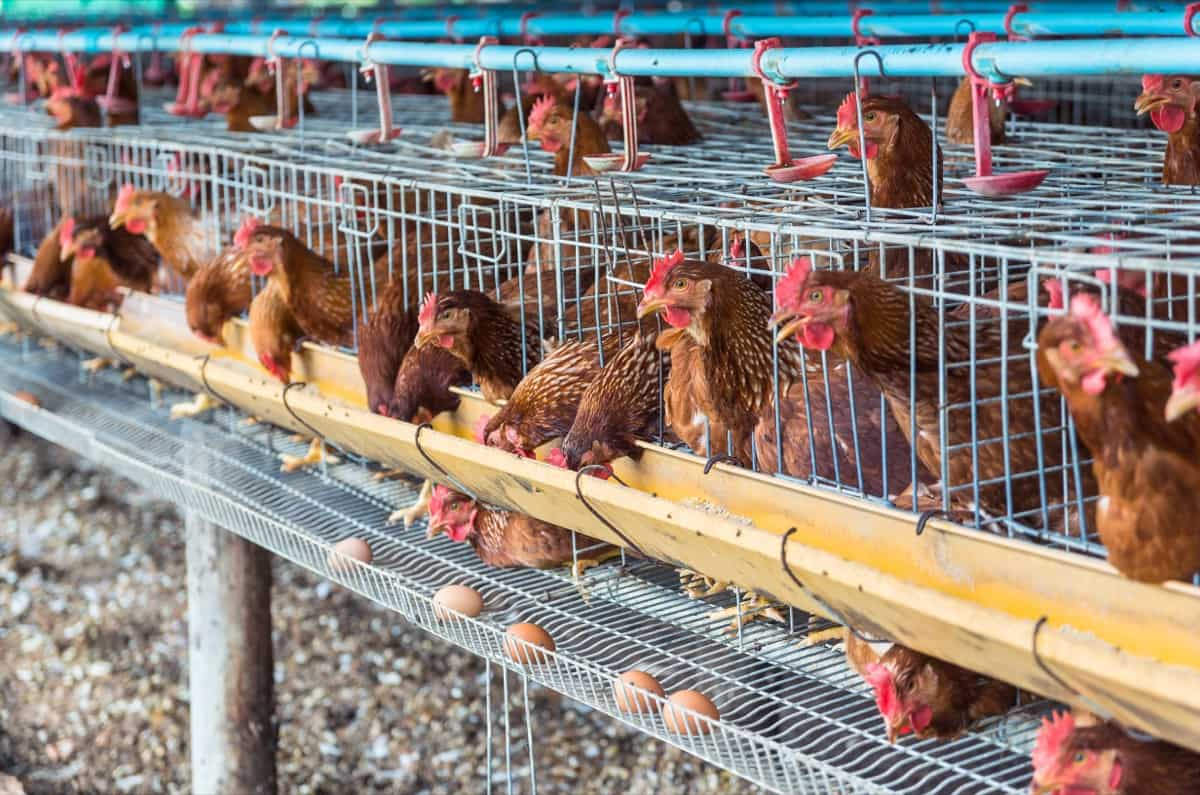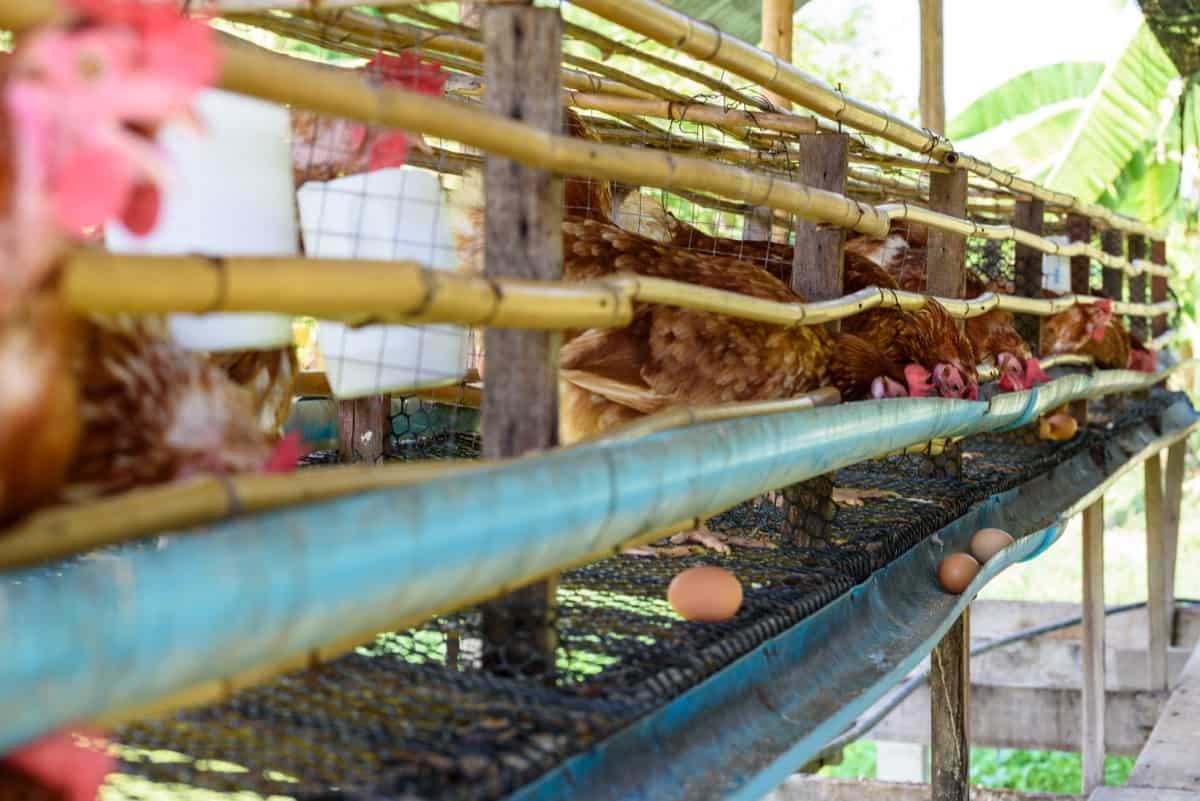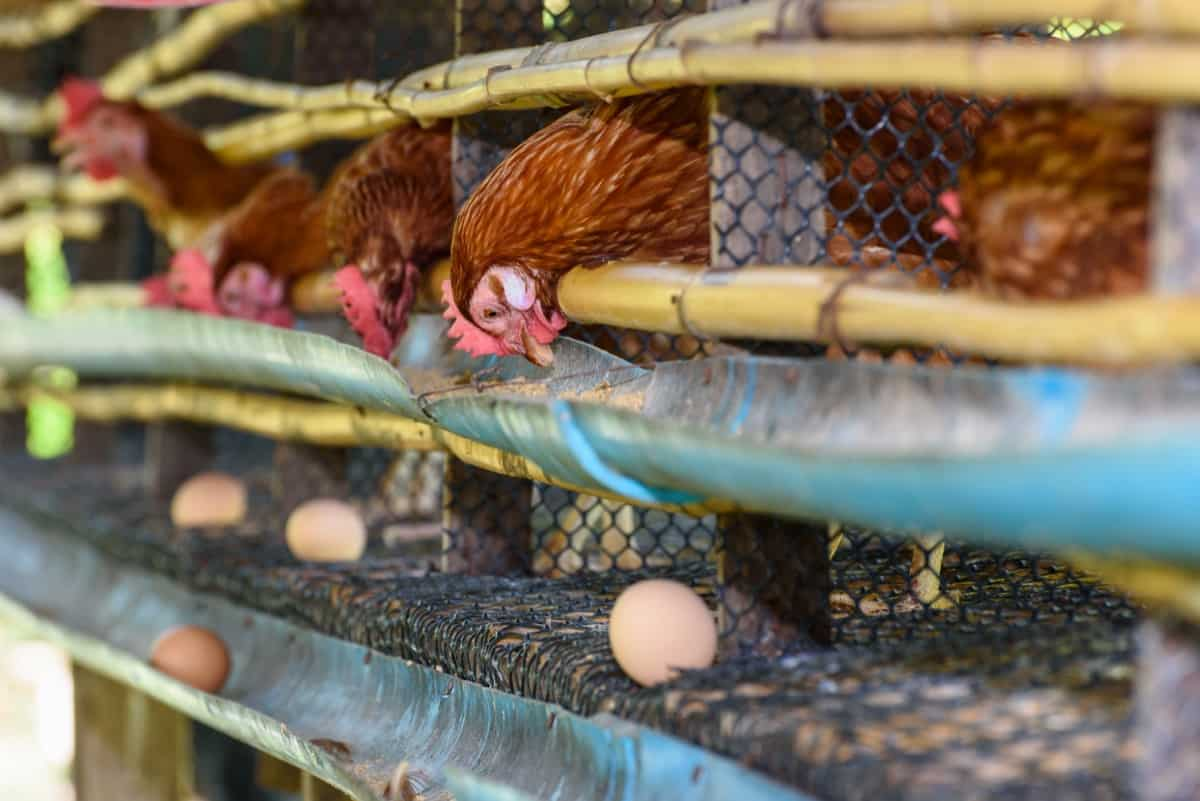BV 380 chickens are marvels of modern poultry farming, presenting a practical and economical option for farmers across the globe. With exceptional egg production and a favorable lifespan, these brown layers have garnered significant attention in poultry farming. This guide delves into the particulars of this breed, dissecting everything from the average BV 380 chicken egg production rate to the cage and feed price for these birds.

BV 380 Chicken: A Closer Look At Their Egg Production
One cannot discuss the BV 380 chicken without acknowledging its impressive egg-laying capabilities. A BV 380 hen, in her prime, can astound you with her prolific production. A key question often raised is, ‘How many eggs does BV380 lay?’ A healthy and well-cared BV 380 hen can lay approximately 300-320 eggs annually, yielding more than many comparable breeds. Factors influencing this egg production include the hen’s age, health, diet, and living conditions, with optimal conditions resulting in peak performance.
Understanding the Lifespan Of BV 380 Chickens
In poultry farming, a bird’s lifespan is a crucial parameter for profitability and planning. When it comes to the BV 380 hen lifespan, farmers can expect these hens to live up to 5-7 years. However, it’s worth noting that their prime egg-laying period typically spans the first two to three years of their life. After this period, egg production gradually declines. Therefore, while these birds have a relatively long lifespan, their productive lifecycle in egg laying is relatively shorter.
An Insight Into BV 380 Chicken Cage Pricing
Understanding the BV 380 chicken cage price is vital for anyone venturing into this sector. The costs vary significantly based on size, material, design, and functionality. Prices range from $50 for a basic, smaller coop to several hundred dollars for larger, more elaborate designs. It’s worth noting that while initial costs might seem high, good-quality cages are a long-term investment that can save farmers substantial amounts in the long run by reducing risks of disease transmission and promoting better overall health and productivity of the birds.
Breaking Down BV 380 Chicken Feed Costs
The BV 380 chicken feed price is a significant factor in the economics of raising these birds. As any seasoned poultry farmer would agree, the feed constitutes a significant portion of the overall expenses in chicken rearing. The price varies depending on the quantity and quality of the feed, as well as the location.
On average, feed for a BV 380 hen may cost around $0.10-$0.15 daily. High-quality feed, rich in proteins, vitamins, and minerals, will be more expensive than lower-quality alternatives. However, it’s vital to remember that better feed quality translates into healthier chickens and improved egg production.
Exploring the Breeding Cycle of BV 380 Chickens
A critical aspect of raising BV 380 chickens is understanding their breeding cycle. The BV 380 hen typically reaches maturity around 4 to 5 months, when she will start laying eggs. As mentioned, egg production peaks during the first two to three years of the hen’s life. After this period, egg production gradually declines. During the peak laying period, the BV 380 hen usually lays one egg per day, which explains the high egg production rate.
In case you missed it: Project Report of Broiler Chicken Farm: Cost and Profit Analysis

Incorporating Suitable Lighting for BV 380 Chickens
Lighting plays a crucial role in the life of BV 380 hens, affecting their laying cycle and overall health. These hens require a certain amount of light daily to maintain their egg production. Farmers typically ensure that the birds receive about 14 to 16 hours of light daily, including natural and artificial light. The cost of such lighting systems can vary widely, but on average, expect to pay around $30-$50 for a basic system. The additional lighting often helps to boost egg production, especially during the shorter winter days.
Ensuring the Health and Welfare of BV 380 Chickens
Maintaining the health of BV 380 chickens is paramount to their productivity. Regular health checks, appropriate vaccinations, and effective parasite control are all part of this process. Routine healthcare costs for a BV 380 hen can run up to $10-$15 per year. Healthy birds will likely lay more eggs, live longer, and provide a better return on investment.
It is important to observe the birds daily for any signs of illness or distress and take immediate action if necessary. Ensuring adequate space per bird, providing enrichment, and maintaining good air quality also contribute to the overall welfare of the hens.
Marketing and Sales of BV 380 Chicken Eggs
The final piece of the BV 380 chicken farming puzzle lies in marketing and sales. Given the high egg production rate, farmers often find themselves with many eggs that need to be sold. Developing a solid marketing strategy is essential. This might involve direct sales to consumers, supplying local grocery stores, or exporting to international markets. The price that the eggs fetch in the market can significantly impact the overall profitability of the farming venture. The price of BV 380 eggs ranges from $3-$5 per dozen in most markets.
Monitoring and Adapting to Environmental Conditions
While much of BV 380 chicken farming revolves around factors within the farmer’s control, such as feed, housing, and health care, another significant factor can influence the venture’s success: the environment. Environmental conditions, including temperature, humidity, and seasonal variations, can profoundly impact the birds’ well-being and productivity.
For instance, BV 380 chickens tend to thrive in moderate climates, and extremely hot or cold conditions can stress the birds, affecting their egg production and overall health. Therefore, farmers must be prepared to adapt their management strategies based on environmental conditions, including installing heating or cooling systems in the coop, ensuring adequate ventilation, or modifying feeding strategies.
In case you missed it: What You Should Know About Raising Chickens and Ducks Together

Conclusion
When we pull together the specifics of BV 380 chicken egg production, hen lifespan, cage, feed costs, and other key management factors, we get an accurate picture of the BV 380 chicken farming venture. It’s an undertaking that requires significant investment, primarily in the form of cage, feed, lighting, and health care. However, the impressive egg production rate and the hen’s reasonable lifespan balance these costs.
By managing their resources wisely, maintaining optimal living conditions, providing a nutritionally balanced diet, and adapting to environmental conditions, farmers can maximize their returns from BV 380 chicken farming. It’s an endeavor that promises a blend of challenges and rewards, with the potential to transform the profitability of poultry farming operations.
- Feed Your Flock for Less: Top 10 Tips to Save on Chicken Feed
- Ultimate Guide to Ossabaw Island Hog: Breeding, Raising, Diet, and Care
- Hatching Answers: The Top 10 Reasons Your Chickens Aren’t Laying Eggs
- Eggs and Economics: Breaking Down the Cost of Raising Backyard Chickens
- Defend Your Greens: Proven Methods to Keep Iguanas Out of Your Garden
- Ultimate Guide to Cinnamon Queen Chicken: A Comprehensive Guide for Beginners
- Ultimate Guide to California Tan Chicken: Breeding, Raising, Diet, Egg-Production and Care
- Ultimate Guide to Marsh Daisy Chicken: Breeding, Raising, Diet, and Care
- 10 Types of Chicken Farming Businesses You Can Start for Profits